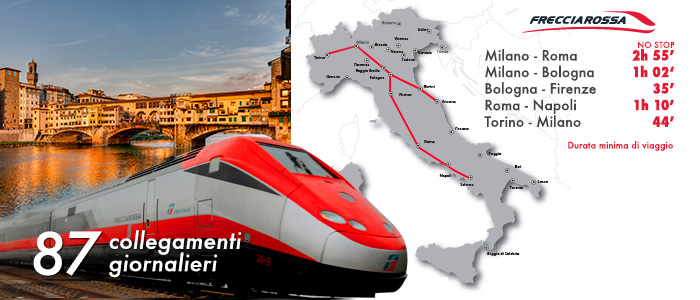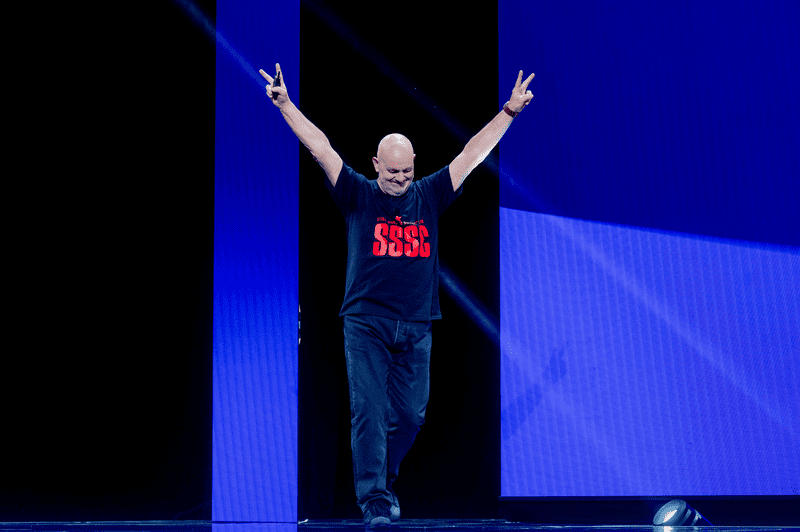
High-speed rail is considered the most sustainable and efficient means of transport for distances between 300 and 750 kilometers. On paper, Europe, with its multitude of continental trips and large cities at mid-range distances from each other, seems the ideal place for an extensive high-speed network. However, actual practice proves somewhat more uncompromising.
“Normal train connections,” which were discussed in detail in the last edition, are more than ample in almost all countries. When it comes to high-speed connections, the differences are considerably greater. Still, with the help of funding from Brussels, a fair amount of progress has been made over the past decade.
Will high-speed trains make short-haul flights obsolete? We are nowhere near that point yet in 2022. This map shows the state of play for the HSL. You can zoom in with the interactive tool underneath the map.

International hurdles
How are things shaping up exactly for this cross-border cooperation which is supposed to make a large European train network possible? It’s mixed. The ‘ambitious’ plans for a faster intercity connection from Amsterdam to Berlin are barely getting off the ground. Albeit that the NS and Deutsche Bahn are planning on cooperating more actively. This will reduce the travel time between the two capitals by almost an hour by the year 2030: from 6 hours and 22 minutes, to ‘just’ 5 hours and 27 minutes.
In order to make these savings in time possible, in-between stops will be scrapped and, in addition, new carriages that are suitable for both German and Dutch overhead lines will have to start running by 2024. This will eliminate the need to change locomotives at the border. Is it a viable alternative to flying? That’s tricky. By plane, this trip just takes 1 hour and 11 minutes, but that doesn’t include check-in times and the drive to the city center. Still, this is not likely to take four hours or more. Provided, of course, that no staff strikes take place at airports.
China versus Europe
How is this progressing elsewhere? Well, it’s a mixed bag. China is the absolute high-speed rail champion on the planet. Yet this does not mean that not much is happening elsewhere in Europe. At the turn of the century, the total network on this continent comprised just under 3,000 kilometers of high-speed railway track. Twenty years later, this has risen to over 11,000 kilometers, according to the UIC High Speed Atlas van 2021.
What’s more, with Spain, France, Germany, Italy, the United Kingdom, Finland and Sweden, European countries are fairly well represented in the ranking of countries with the highest number of kilometers of operational lines. In the United States, for example, which is more or less equal in size to the European Union, progress is substantially slower. The complete top 25 looks as follows:
Spanish ambitions
High-speed trains in Europe are more commonly associated with the Thalys trains of France or the ICE trains of Germany. Yet Spain is currently the country with the most extensive network on the continent. The country's largest cities - Barcelona and Madrid - are 623 kilometers apart. Travel time between them with the ultramodern trains is about 2,5 hours. So, this is a considerable time-saver compared to Amsterdam-Berlin, which is about 655 kilometers apart.
A stellar example of a Spanish success? That remains to be seen. At the moment, this mega project is mainly facing a great deal of criticism. Passenger numbers are still disappointing, for one thing, tickets are expensive and it has already cost many billions of taxpayers' money - a significant portion of which comes from European subsidy coffers. During its first three decades, the AVE network cost upwards of 60 billion euros.
Whether this green flagship of the Spanish government will ever be profitable, is something that only the future will reveal. Nevertheless, confidence in the project remains high. Over the coming years, thousands of extra kilometers of AVE tracks will have to be added. Yet even thirty years after its inception, this ambitious project is largely a national affair. A connection between Lisbon and Madrid has been shelved for now while the line to France ends around 25 kilometers across the border in Perpignan. The expectation is that it will take at least until 2040 before a complete train journey from Barcelona to Lyon with a speed of at least 270 km per hour will be possible.
A package of privatization measures is intended to make services more efficient and economical in the near future. Something which has already been going on in Italy for ten years to everyone's satisfaction.

The Alitalia junkyard
In the Benelux, HSL machinery and Italy are mainly associated with the Fyra debacle. However, this paints anything but a complete picture. These Italian-designed futuristic trains are operating successfully in many other countries. And in our own country too, a high-speed network has been established which links practically all the major cities. Over time, the number of passengers increased from 6.5 million in 2008 to 40 million ten years later, while the number of lines has doubled. In general, the response to it has been favorable. For starters, the trains run on time and the tickets are relatively inexpensive in part thanks to subsidies.
Despite the fact that trains are still not a fully-fledged alternative to international air travel, Italians have started using this network much more for public transport within their own country. The bankruptcy report of the former national airline Alitalia states that its collapse was partly caused by competition from the railways, which meant that travelers stayed away from domestic flights. The Italians are planning to expand their network to Switzerland, Austria and France over the next ten years, which means that direct connections with London, Amsterdam and Berlin are also on the horizon.
And those old Fyras? They have been refurbished and now happily run as regular intercity trains between Milan, Bologna and Ancona. At speeds of 250 km per hour, it is possible that they may shake too much.
Renaissance on the rails
In the wake of the larger countries, will other member states also adopt fast trains en masse? This tends to vary. Yet the European Commission has every confidence in the project. A continental high-speed rail network is considered one of the absolute top priorities for a climate-neutral future. Even so, it will be another twenty years or so before these sustainable ambitions become a reality.
European mega projects will be completed elsewhere in the next few years as well. For example, the 66 kilometer-long Brenner Base Tunnel through Austria should make the Berlin-Palermo route possible come 2025. The Baltic States are planning to build the Poland-Finland route by rail, while Scandinavia has concrete plans for a fast rail connection to Germany.
As yet, no concrete plans are in place in the Netherlands for new, ultra-fast international train connections. Theoretically, if the Lely line is given the green light, it should be possible to travel from Groningen to Lelystad at speeds of twohunderd kilometers per hour. Yet the comparison with France, Spain, Italy and Germany is not entirely fair since these countries are much more thinly populated with much greater distances between major cities. As a result, that higher speed is utilized much more optimally.
Will this network be fully operational within the decade, as they envisage in Brussels with the Green Deal? Time will tell.









